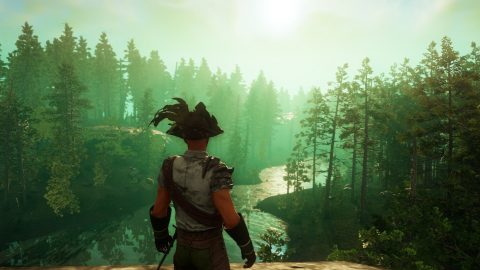NME Music News, Reviews, Videos, Galleries, Tickets and Blogs | NME.COM

Sucker Punch has shared new details on what players can expect from its highly anticipated samurai-ninja action game, Ghost Of Tsushima, this time focusing on its combat mechanics.
In a lengthy post on the official PlayStation Blog, the studio’s co-founder, Chris Zimmerman, highlighted three core ideas for combat in Ghost Of Tsushima: speed, sharpness and precision.
Speaking about speed, Zimmerman revealed that all of the attacks in the game were captured on the studio’s in-house motion capture stage, which brings about authentic movement and reaction speeds in the game.
However, these realistic attack speeds created a problem for the studio as “human reaction times are slower than you think. It takes about 0.3 seconds to respond to a visual stimulus, no matter how simple the stimulus and response are”.
To rectify this, the studio realised that it had to keep Jin’s fast attack speed and also began layering enemy attacks. “While one enemy attacks, another enemy can be winding up,” Zimmerman said. “We tune things so that Jin has barely enough time to deal with each enemy attack as it lands, just like in the samurai movies that inspired us, but there will often be two or even three attackers in the middle of an attack sequence at once.”
“No enemies standing around waiting to be attacked, just unrelenting aggression,” he added. “Ideally, players leave fights a little bit exhilarated, because that’s how Jin feels. Barely in control, barely alive, but moving forward nonetheless.”
The second point Zimmerman touched on – sharpness – refers to Jin’s Katana: “In the samurai films that inspired us, a handful of cuts is enough to fell the toughest enemy. We couldn’t stray too far from that – and when we experimented with letting enemies absorb more damage, when they could take too many hits before falling, the sword no longer felt sharp.”
However, this factor also applies to the enemy’s blades too. “The Mongols keep their weapons just as sharp, and Jin can’t ignore cuts any easier than the Mongols can. That helps balance things.” Sharpness will also play into players’ strategies with blocking and parrying.
The third and final point that Zimmerman detailed was Jin’s precision. Waiting for the perfect time to block an attack will turn it into a perfect parry, which will stun an opponent, leaving them vulnerable to attacks.
This precision also carries forward into Jin’s stances. Stances are collections of new attack techniques, which the player can switch between at any point. “Each Stance is designed to be particularly effective against a subset of the dozens of enemy types Jin faces; switching between Stances based on who Jin faces amplifies his deadliness,” Zimmerman noted.
The post features a video that showcases Jin switching stances when he’s faced with different enemy types. The Stone stance is used to quickly finish off a swordsman, while the Water stance creates openings against shieldmen.
Zimmerman warped up the post by urging players to choose the difficulty that challenges them the most, saying that “the focus and discipline and practice it will take to meet that challenge is exactly what is demanded of Jin Sakai”.
Ghost Of Tsushima is set to release exclusively on PlayStation 4 on July 17.
The post Stances, parrying and combat mechanics in ‘Ghost Of Tsushima’ revealed appeared first on NME Music News, Reviews, Videos, Galleries, Tickets and Blogs | NME.COM.






